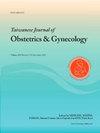骨盆重建术与不重建术后中尿道吊带放置后尿潴留的发生率及危险因素
IF 2
4区 医学
Q2 OBSTETRICS & GYNECOLOGY
引用次数: 0
摘要
目的术后尿潴留(POUR)是泌尿妇科手术的常见后果。在这项研究中,我们回顾性地评估了POUR的发生率,并确定了在有或没有骨盆重建手术的中尿道吊带放置后发生尿潴留的危险因素。材料和方法本研究纳入了866例尿动力应激性尿失禁的女性,她们接受了经通气器(TOT)和单切口吊带(SIS)放置,并伴有或不伴有重建手术。对研究的术后评估进行主客观回顾,包括出院前的排尿量和膀胱扫描、咳嗽压力测试、尿流量测定、尿动力学参数变化以及术后3个月的泌尿生殖窘迫量表六项问卷。结果共纳入866例患者,其中无POUR 686例(79.2%),短暂性POUR 158例(18.3%),延长性POUR 22例(2.5%)。没有延长的患者在出院后2周需要Foley导管。既往盆腔重建手术、合并子宫切除术、年龄较大、腔后残留体积较大与POUR相关(p <;0.05)。盆腔重建术患者与未行盆腔重建术患者的发生率无显著差异。然而,SIS患者的POUR发生率高于TOT患者(p <;0.05)。尿动力应激性尿失禁的总客观治愈率为91.7%。长期灌注的治愈率明显低于短暂性灌注的治愈率(p = 0.013)。多因素logistic回归分析显示,年龄、既往子宫切除术、MUCP <;30 cmH2O、SIS是发生POUR的危险因素。结论伴盆腔重建术或不伴盆腔重建术的中尿道吊带置入后,spour发生率较高;然而,大多数病例是轻微的,短暂的,自发消退。临床医生应该意识到POUR的危险因素,并努力进行适当的预防和管理。本文章由计算机程序翻译,如有差异,请以英文原文为准。
Incidences and risk factors of postoperative urinary retention after mid-urethral sling placement with and without pelvic reconstructive surgery
Objective
Postoperative urinary retention (POUR) is a common consequence of urogynecologic surgery. In this study, we retrospectively assessed the rate of POUR and identified risk factors for the development of urinary retention after mid-urethral sling placement with and without pelvic reconstructive surgery.
Materials and methods
Eight hundred and sixty-six women with urodynamic stress incontinence who underwent transobturator (TOT) and single-incision sling (SIS) placement, with or without a concomitant reconstructive procedure, were included in this study. Postoperative evaluations from the study were reviewed both subjectively and objectively, including voiding volume and bladder scan prior to discharge, cough stress test, uroflowmetry, changes in urodynamic parameters, and the Urogenital Distress Inventory six-item questionnaire at 3 months after surgery.
Results
A total of 866 patients were included, of which 686 patients had no POUR (79.2 %), 158 had transient POUR (18.3 %), and 22 had prolonged POUR (2.5 %). No patients with prolonged POUR required a Foley catheter 2 weeks after discharge. Prior pelvic reconstruction surgery, concomitant hysterectomy, older age, and higher postvoid residual volume were associated with POUR (p < 0.05). Incidences of POUR were not significantly different between patients with and without concomitant pelvic reconstructive surgery. However, patients with SIS had a higher incidence of POUR than those with TOT (p < 0.05). Total objective cure rate of urodynamic stress incontinence was 91.7 %. Patients with prolonged POUR had a significantly lower cure rate, whereas those with transient POUR had the highest cure rate (p = 0.013). Multiple logistic regression analysis revealed that old age, previous hysterectomy, MUCP <30 cmH2O, and SIS were the risk factors for POUR.
Conclusions
POUR was common after mid-urethral sling placement with or without pelvic reconstructive surgery; however, most cases were mild, transient and resolved spontaneously. Clinicians should be aware of the risk factors for POUR and strive for adequate prevention and management.
求助全文
通过发布文献求助,成功后即可免费获取论文全文。
去求助
来源期刊

Taiwanese Journal of Obstetrics & Gynecology
OBSTETRICS & GYNECOLOGY-
CiteScore
3.60
自引率
23.80%
发文量
207
审稿时长
4-8 weeks
期刊介绍:
Taiwanese Journal of Obstetrics and Gynecology is a peer-reviewed journal and open access publishing editorials, reviews, original articles, short communications, case reports, research letters, correspondence and letters to the editor in the field of obstetrics and gynecology.
The aims of the journal are to:
1.Publish cutting-edge, innovative and topical research that addresses screening, diagnosis, management and care in women''s health
2.Deliver evidence-based information
3.Promote the sharing of clinical experience
4.Address women-related health promotion
The journal provides comprehensive coverage of topics in obstetrics & gynecology and women''s health including maternal-fetal medicine, reproductive endocrinology/infertility, and gynecologic oncology. Taiwan Association of Obstetrics and Gynecology.
 求助内容:
求助内容: 应助结果提醒方式:
应助结果提醒方式:


